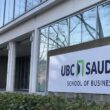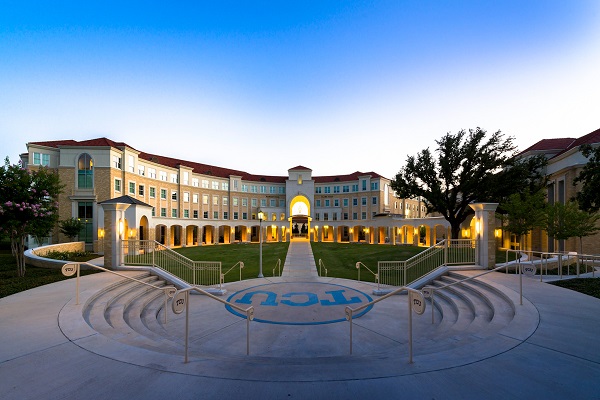Let’s talk about something that really matters when you’re choosing a university. You can have the fanciest degree certificate on your wall, but if you can’t find a job after graduation, what was the point? Texas has some excellent universities, and I want to help you understand which ones actually get their graduates into jobs.
I’ve looked into the employment numbers, talked to people who’ve been through these schools, and dug into what makes certain universities better at getting students hired. Some of what I found surprised me. The schools with the flashiest names aren’t always the ones with the best job outcomes.
Why Job Placement Numbers Actually Matter
Before we dive into specific schools, let’s think about what job placement really means. When universities talk about placement rates, they’re usually referring to the percentage of graduates who have jobs within six months of finishing school. Sounds simple enough, right?
Well, it’s more complicated than that. Some schools count any job, even if you’re working at a coffee shop with your engineering degree. Others only count jobs in your field of study. Some include graduate school in their numbers, which makes sense if you’re planning to continue your education, but doesn’t help if you need to start earning money right away.
The best universities do two things really well. First, they build strong relationships with companies that actually hire their graduates. We’re talking about regular recruiting visits, internship programs, and alumni networks that open doors. Second, they prepare students with practical skills that employers want. Theory is great, but knowing how to do the job matters more when you’re applying for positions.
Rice University
Rice University in Houston doesn’t have huge enrollment numbers like some state schools, but that’s actually part of what makes it special for job placement. With only about 4,000 undergrads, the career services office can give real attention to each student.
The placement numbers at Rice are impressive. About 92% of graduates either have jobs or are in graduate school within six months of graduation. That’s really high. But what makes Rice particularly valuable is the quality of those jobs. Rice grads often land positions at major tech companies, consulting firms, and energy corporations.
Houston’s economy helps a lot here. You’ve got the energy industry, medical center, aerospace, and a growing tech sector all in one city. Rice has spent decades building relationships with companies in these industries. When Shell or ExxonMobil, or NASA needs to hire, they come to Rice first. That kind of access matters more than you might think.
The engineering programs are where Rice really shines for employment. Chemical engineering, mechanical engineering, and electrical engineering graduates have placement rates above 95%. These students often have multiple job offers before they even graduate. The school’s connection to the energy industry means internships during school are common, and those internships frequently turn into full-time offers.
Computer science graduates do well, too, though they face more competition from UT Austin students. Still, Rice’s smaller class sizes mean professors know you by name and can write detailed recommendation letters. That personal touch helps when you’re competing for positions.
One thing to note about Rice: it’s expensive. Really expensive. The school does offer financial aid, but you need to think carefully about whether the return on investment makes sense for your situation. High placement rates matter more when you’re not drowning in debt.
University of Texas at Austin
UT Austin is huge, with over 50,000 students total. You might think that size would work against job placement, but actually, it creates its own advantages. The alumni network is massive, and Texas companies love hiring UT grads.
Overall placement rates hover around 88-90% across all majors, which is solid for a school this size. But certain programs do much better. The McCombs School of Business reports placement rates above 93%, with graduates going into consulting, finance, accounting, and marketing roles. Major companies recruit heavily at McCombs, holding information sessions and interviews right on campus.
The engineering school is even stronger for placement. Computer science, petroleum engineering, and electrical engineering graduates regularly see placement rates above 95%. Austin’s growing tech scene helps enormously. Companies like Apple, Google, Facebook, and Oracle all have a significant presence in Austin, and they hire UT students constantly.
What UT does really well is connecting students with internships during their sophomore and junior years. These internships are crucial. A student who interns at a company during school has maybe a 60-70% chance of getting a full-time offer from that same company after graduation. UT’s career fairs are enormous, with hundreds of companies showing up to recruit.
The university’s size means you need to be proactive. Career services exist, but with 50,000 students, they can’t hold your hand through the process. Students who do well at job hunting are the ones who attend career fairs, join professional student organizations, and network actively. If you wait for opportunities to come to you, you’ll struggle.
Location in Austin matters tremendously right now. The city has become a major tech hub, and companies are desperate for talent. UT students benefit from being right there, able to attend recruiting events, visit company offices, and make connections that lead to jobs.
Texas A&M University
Texas A&M might have the strongest alumni network of any university in Texas. Aggies, as they call themselves, are famously loyal to their school and to each other. That loyalty translates directly into job opportunities.
Overall placement rates at A&M are around 85-87%, which is respectable but not the highest we’ll discuss. However, certain programs do exceptionally well. Engineering placement rates run above 90%, particularly in petroleum engineering, chemical engineering, and aerospace engineering. The energy industry recruits heavily at A&M, and the school’s location in College Station puts it close to Houston’s energy corridor.
The Corps of Cadets program deserves special mention. Students in the Corps have placement rates above 95%, often securing jobs in military service, defense contracting, or industries that value the leadership training the Corps provides. Companies know that Corps graduates show up on time, work hard, and understand teamwork.
Agriculture and life sciences programs also show strong placement, which makes sense given A&M’s history and focus. If you want to work in agriculture, veterinary medicine, or environmental science, A&M connections in those fields are unmatched in Texas.
What makes A&M special for job placement is what happens after you graduate. The alumni network continues to open doors throughout your career. An A&M ring is recognized across Texas, and Aggies genuinely help other Aggies get jobs, make connections, and advance in their careers. That’s worth something that doesn’t show up in immediate placement statistics.
College Station isn’t exactly a job market hub like Austin or Houston. Most students need to look elsewhere for positions after graduation. But A&M’s career services brings employers to campus regularly, and the university runs career fairs in Houston and Dallas to give students access to more companies.
University of Houston: The Commuter School That Delivers
University of Houston doesn’t have the prestige of Rice or UT, but its job placement numbers tell an interesting story. Overall placement rates run around 82-85%, which is solid. But UH has some specific advantages that make it worth considering.
First, it’s in Houston, America’s fourth-largest city, with an incredibly diverse economy. Students can work part-time during school, building experience and connections that lead to full-time jobs after graduation. The school is often called a commuter school, which some people think is negative, but it means students are already integrated into Houston’s working world.
The Bauer College of Business has strong placement numbers, particularly in accounting and supply chain management. Houston’s energy and logistics industries need these skills constantly. Bauer graduates often have multiple job offers, even though they’re competing with Rice and UT graduates.
Engineering programs at UH have good placement, too, though not quite at the level of Rice or UT. Still, around 87-88% placement for engineering graduates is nothing to dismiss. The school’s connections to the Houston industry are deep, and companies appreciate that UH graduates often have real work experience in addition to their degrees.
The college is much more affordable than Rice and even cheaper than UT for out-of-state students. When you factor in the lower cost against the solid placement rates, UH offers good value. You might not get the fancy brand name, but you’ll likely get a job, and you won’t have massive debt.
One challenge at UH is that career services is stretched thin. The office serves a lot of students, and you need to be persistent about getting help. The students who succeed at job hunting are self-starters who don’t wait for the university to arrange everything for them.
Southern Methodist University (SMU)
SMU sits in University Park, essentially in the heart of Dallas, and that location shapes everything about its job placement. The school is private and expensive, with tuition comparable to Rice. But the Dallas business community has deep ties to SMU, and those connections produce strong employment outcomes.
Overall placement rates run around 89-91% across all majors. The Cox School of Business does even better, with placement rates consistently above 93%. Finance, accounting, and marketing graduates land jobs at major Dallas corporations, banks, and consulting firms. The school’s reputation in Dallas business circles opens doors that might stay closed to graduates from other schools.
Engineering programs are smaller at SMU, but show solid placement around 88-90%. The school has been investing in technology and engineering programs, recognizing that Dallas’s economy needs these skills.
What SMU offers that’s harder to quantify is access to Dallas’s professional class. The school’s students often come from wealthy families with business connections. Your classmates’ parents might own companies or hold executive positions. Those networking opportunities can lead to internships and jobs that aren’t posted publicly.
The campus culture is different from state schools. Greek life is significant, and there’s definitely a wealthier vibe to the place. If that environment appeals to you and you can afford it, SMU provides real value in job placement. If you don’t fit that mold or can’t pay the tuition, other options might serve you better.
Dallas’s economy is strong and diverse, with finance, technology, telecommunications, and healthcare all providing job opportunities. SMU graduates benefit from being locals in that market, having spent four years building connections in the city where they want to work.
Texas Tech University
Texas Tech in Lubbock doesn’t get much attention compared to UT or A&M, but its job placement numbers are surprisingly good. Overall rates run around 80-83%, which isn’t the highest but represents solid value given the lower cost of attendance.
Certain programs at Tech punch well above their weight. The Rawls College of Business shows placement rates around 88-90%, particularly strong in accounting and finance. West Texas oil money means connections to energy companies, and Tech graduates often find opportunities in that sector.
Engineering placement is solid at around 85-87%. Petroleum engineering, mechanical engineering, and chemical engineering programs all benefit from Tech’s location in oil country. Companies recruiting in West Texas know and trust Tech graduates.
The challenge with Texas Tech is location. Lubbock isn’t exactly a thriving job market. Most graduates need to relocate to Dallas, Houston, Austin, or out of state entirely. The university works hard to bring employers to campus for recruiting, but students need to be willing to move for opportunities.
What Tech offers is affordability combined with decent outcomes. If you’re trying to get a degree without massive debt and you’re willing to work hard at the job search, Tech can get you where you need to go. You won’t have the instant name recognition of UT, but you also won’t graduate owing $100,000.
The school has been investing in career services and trying to improve employer relationships. The trajectory is positive, with placement rates slowly improving over the past decade. Alumni from Tech are loyal and help recent graduates when they can, though the network isn’t as extensive as A&M’s.
University of Texas at Dallas
UT Dallas is relatively young compared to other schools on this list, but it’s been climbing rapidly in both reputation and job placement numbers. Overall placement rates run around 86-88%, which is impressive for a school that wasn’t even considered top-tier twenty years ago.
The Jindal School of Management shows strong placement, particularly in accounting, finance, and information systems. Major consulting firms and technology companies recruit actively at UTD. The school’s location in Richardson, in the heart of Dallas’s tech corridor, provides easy access to companies that are hiring.
Computer science and engineering programs are where UTD really shines for job placement. Rates above 92% for computer science graduates aren’t unusual. The school has positioned itself as a tech-focused university, and companies like Texas Instruments (which has headquarters nearby), AT&T, and various tech startups recruit UTD students heavily.
The student body at UTD is diverse and includes many first-generation college students. The school understands that these students need extra support in navigating professional job markets. Career services offers workshops on interview skills, resume writing, and professional networking that genuinely help students who might not have family connections to fall back on.
UTD is affordable, especially for Texas residents. The combination of reasonable cost and strong placement rates makes it an attractive option. You’re not paying Rice prices, but you’re getting solid job outcomes, particularly in technical fields.
One limitation is that UTD’s reputation outside Texas isn’t as strong. If you want to work in California or New York after graduation, a UT Austin degree might carry more weight. But if you’re planning to work in Texas, particularly in the Dallas area, UTD provides excellent value.
Baylor University
Baylor in Waco occupies an interesting position. It’s a private Baptist university with strong employment outcomes in certain fields. Overall placement rates hover around 84-86%, respectable if not spectacular.
The business school shows solid placement, particularly for accounting graduates. Baylor’s accounting program is well-regarded in Texas, and the school’s faith-based mission resonates with some employers. Healthcare administration is another strong program with good placement outcomes.
Pre-professional programs do well at Baylor. Pre-med and pre-law students benefit from strong advising and a supportive community. While medical school and law school aren’t technically jobs, they’re positive outcomes for students planning professional careers.
Waco has grown in recent years, but it remains a smaller city without the job market of Dallas or Houston. Baylor works to bring employers to campus and maintains an alumni network that helps with placement, but students often need to relocate for opportunities.
The school’s faith-based culture is significant. If you share those values, Baylor provides a supportive community and connections to employers who appreciate the school’s mission. If you’re not comfortable with that environment, other options might suit you better.
Cost is a consideration at Baylor, as it’s a private school with tuition comparable to SMU. The value proposition depends partly on whether the school’s culture and values align with yours.
What Actually Matters When You’re Choosing
Looking at all these numbers, what should you really think about? Here’s my honest take on what matters most for job placement.
Your Major Makes a Huge Difference: Engineering and computer science students have high placement rates almost everywhere. Business students do well at most schools. Liberal arts majors face tougher job markets regardless of where they study. Choose your major carefully, understanding the employment realities in that field.
Location Creates Opportunities: Schools in major cities give you access to internships during your studies. Those internships lead to jobs. A school in a small town might have good placement numbers, but you’ll probably need to relocate after graduation.
The Alumni Network Is Real: Texas A&M proves this point. A strong network of graduates who help each other find jobs is valuable throughout your career, not just right after graduation. Ask about alumni connections when you’re researching schools.
Career Services Quality Varies Widely: Some universities have well-staffed offices that genuinely help students. Others are overwhelmed and can’t provide much individual attention. Try to talk to current students about their experiences with career services before you decide on a school.
Affordability Affects Your Job Choices: If you graduate with $100,000 in debt, you need a high-paying job immediately. That limits your options. Graduating with less debt gives you the flexibility to take a job that might pay less initially but offers better long-term prospects.
Practical Experience Matters More Than Grades: A student with a 3.3 GPA and two internships will usually beat a 4.0 student with no work experience in job hunting. Look for schools that help you get real experience while you’re studying.
Your Own Effort Counts Most: Even at schools with 95% placement rates, some students struggle to find jobs. Even at schools with 80% placement, some students have multiple offers. The university provides resources and opportunities, but you need to use them actively.





